Types of Sculpture – An In-Depth Look at This Fascinating Medium
Have you ever wondered what kind of sculpture Michelangelo’s David (c. 1501 – 1504) is or what process Auguste Rodin used? There are many fascinating ways to create a sculpture, such as carving or casting, that will produce different aesthetic results. The art of creating a sculpture first requires one to understand the range that one has to play around with the different types of sculptures, which each offer unique processes and insights into how one can truly bring a concept to life. In this article, we will delve into the basics of sculpture by reviewing the definition of sculpture, as well as the materials involved, the different sculpture types, and a few examples of each to get you inspired!
What Is a Sculpture?
What makes sculpture so fascinating, and what is a sculpture to begin with? The answer boils down to our centuries-long passion for understanding form and dimension within space, as something that we can construct to exist outside of ourselves, whether it is for appreciation or functional use. A sculpture is defined as a three-dimensional object that is constructed for artistic purposes, usually through a variety of methods involving processes like carving, a reductive technique, and assemblage, an additive technique.
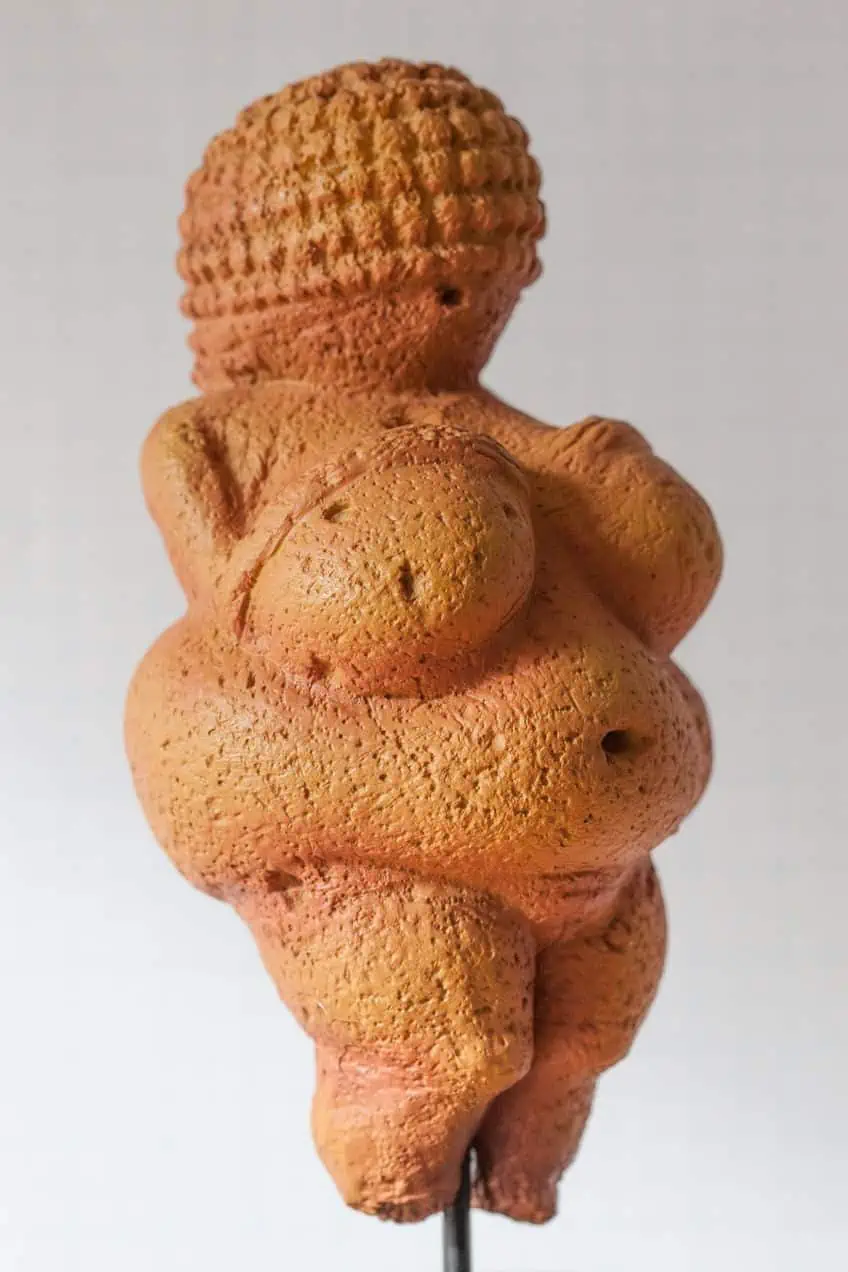 Modern Copy of Venus von Willendorf (2020); photographer User:Thirunavukkarasye-Raveendran, CC0, via Wikimedia Commons
Modern Copy of Venus von Willendorf (2020); photographer User:Thirunavukkarasye-Raveendran, CC0, via Wikimedia Commons
Thanks to the advent of advanced technology, sculptures can also be produced through innovative means such as 3D printers, programmed to produce a three-dimensional object based on a design, rendered on a two-dimensional screen. How amazing is that? However, as a novice sculptor, it is worthwhile to explore some of the traditional forms of sculpture that have not only kept the medium alive as an art form but also established some of the world’s most famous artists and artworks. Sculptures can also be categorized in terms of the era or cultural moment in which they were produced or via the technique or process that defines a large part of the sculpture and its uniqueness. The context of sculptural artworks also helps one to classify the different sculpture types, whether it is a Gothic sculpture placed in a historical church or an ornate romantic sculpture from the Baroque and Romantic periods.
Traditional Materials Used in Sculpture
Sometimes, to best answer the question “what is a sculpture?”, one needs to acquire a sense of the materiality of the artwork and how it occupies space through its physicality. When conceiving a sculpture and planning your execution, there are a variety of materials available in your local art supply store that can help you get started. From clay to papier mache, one can produce unique forms that can be combined with a range of materials. Traditionally, early humans would create carvings on rock structures and surfaces to produce relief sculptures, which we will learn more about in detail soon.
The natural environment was the first source of materials for early sculptors and this included materials such as chopped wood, stones, branches, and eventually marble, precious metals like gold and bronze, most notably used in the Renaissance.
Sculpting art forms also requires one to have a basic understanding of the elements of sculpture and art, which helps one to understand how to best work with the materials at hand. Whether you opt for bronze or plaster, gaining a solid knowledge of your material and its properties is key to creating your envisioned form most effectively. Examples of natural materials in sculpture can be seen in pre-Columbian American Indian sculpture through stone, hardstones like jade used in Chinese sculpture, and wood sculptures used extensively across Oceania, Medieval Germany, and among a few modern artists.
The Elements and Principles of Sculpture Art
To understand the processes within the different forms of sculpture, you must learn more about the fundamental elements and principles of art. There are at least several different elements to consider when sculpting artworks in a three-dimensional form. These include volume, proportion, space, emphasis, line, texture, balance, rhythm, color, value, and shape. To create a sculpture, one needs to map out its design, and to do this, one needs to consider the main principles of sculptural design, which work in tandem with the sculpture elements.
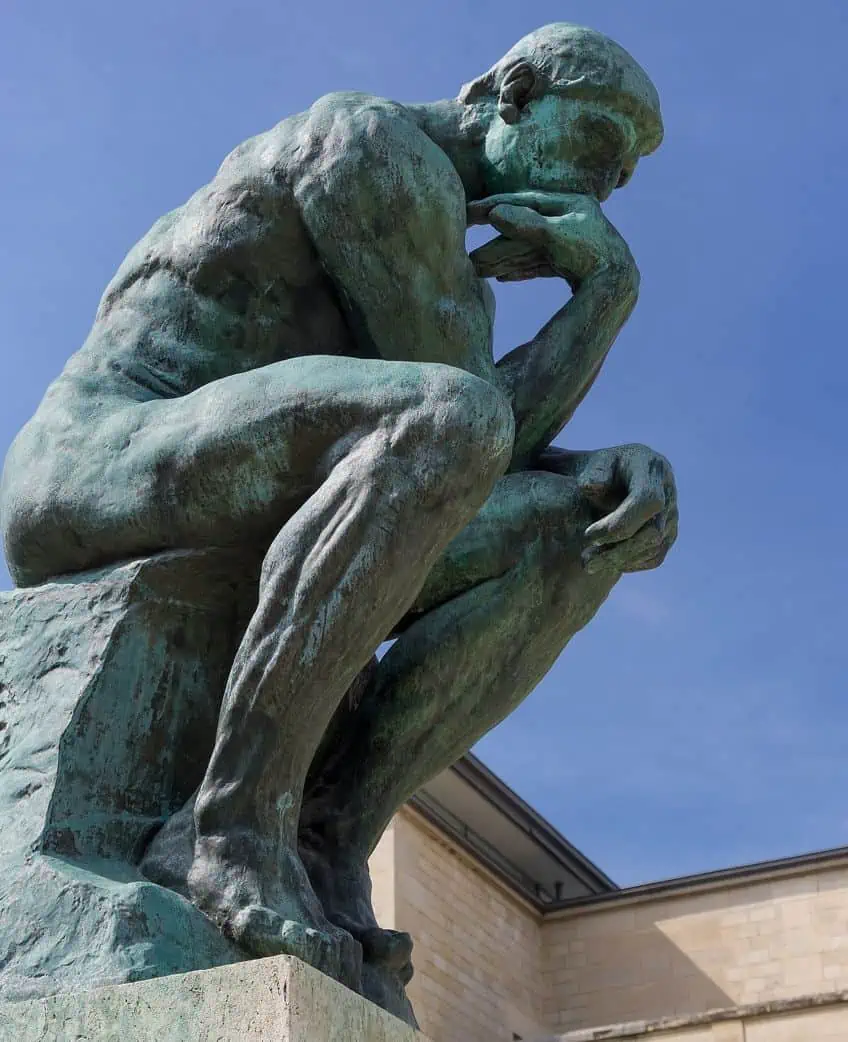
The main principles encompass balance, articulation, scale, proportion, and orientation, which helps one set up a spatial scheme for understanding how the sculpture will interact with its environment, in terms of its orientation to the viewer defined by planes of reference and a system of axes. Elements like the sculpture’s mass can be understood by observing its axis, which can be created by envisioning a symmetrical volume to highlight the gravitational pivot point of the mass.
Other important areas to pay attention to include the proportional relations of the sculpture that exists between areas, linear dimensions, and volumes, and which contribute to the visual expression of the work.
Exploring the Seven Types of Sculpture
Artistic sculptures can be created via many processes and techniques that make each sculpture unique in its physical appearance. Sometimes, artists may combine a few techniques in one artwork to create entirely new artworks that stand out. Below, we have summarized the seven main sculpture types with examples that will spark your interest!

Freestanding Sculpture
A freestanding sculpture refers to a three-dimensional form that can be seen and studied from all angles and is not attached to any background surface. Freestanding sculptures expose all parts of a sculpture and are also identified as full-round sculptures. For this type of sculpture, the artist needs to pay attention to the artwork’s center of gravity and ensure that the distribution of mass is appropriate to the sculpture’s size, such that it does not fall over. These sculptures are also produced with a small base mounted on a plinth, to attach the sculpture on. In this way, the freestanding sculpture can be viewed from a height in all directions. You will find many examples of freestanding sculptures and statues in art museums around the world, and even private sculpture gardens.
These artistic sculptures are also usually produced using durable materials that can withstand the elements and are often found in public spaces.
Statue of Liberty (1924) by Frédéric Auguste Bartholdi
| Artist Name | Frédéric Auguste Bartholdi (1834 – 1904) |
| Date | 1924 |
| Medium | Copper, gold, cast iron, and steel |
| Dimensions (cm) | 9300 (h) |
| Where It Is Housed | Liberty Island, New York City, United States |
Freestanding artworks are also produced to stand as an independent object that exists in its own capacity. The most famous example of a freestanding sculpture is the Neoclassical Statue of Liberty designed by Frédéric Auguste Bartholdi. The towering 93-meter-tall statue is located on Liberty Island in New York City and has become a symbol of freedom and unity for the United States. This globally renowned statue was originally a gift from France that had its metal skeleton constructed by the famous French civil engineer Gustave Eiffel and her face was modeled after Bartholdi’s mother. While construction of the statue began in 1876, it was only completed in 1924, long after Bartholdi died. Open to the elements, this freestanding work of art is also struck by lightning up to 600 times each year.
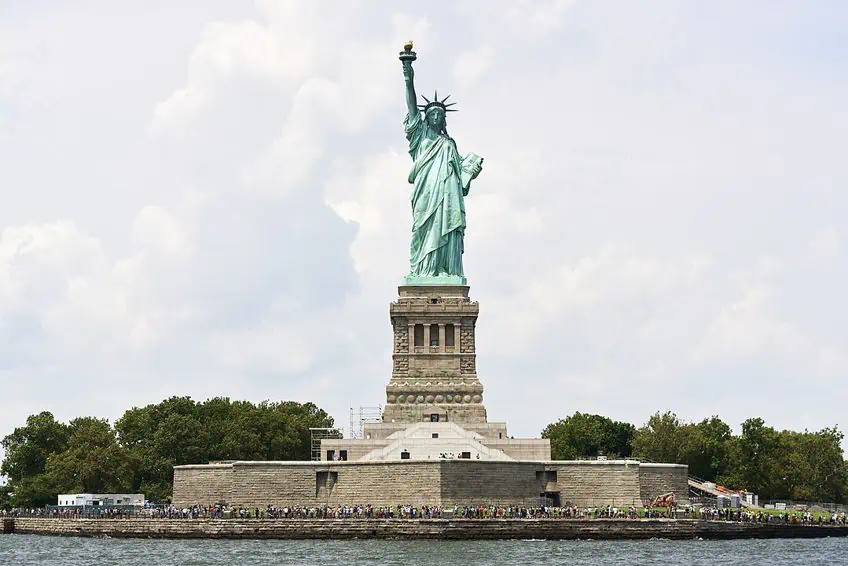
Relief Sculpture
This type of artistic sculpture is also known as relievo and describes artworks that are attached to a surface, which is also the material from which the sculpture is created. When viewed from a distance, the sculpture may appear flat and two-dimensional but relief artworks are entirely three-dimensional art forms that are classified into three main sub-categories.
These include sunken relief, high-relief, and low-relief sculptures.
Sunken Relief of Horus (1295 – 1186 BCE) by Unknown Sculptor
| Artist Name | Unknown |
| Date | 1295 – 1186 BCE |
| Medium | Limestone |
| Dimensions (cm) | 148 x 60.3 |
| Where It Is Housed | The Menil Collection, Texas, United States |
A technique that was widely used in ancient Egyptian society was sunken relief. These types of sculptures refer to images or panels that are carved in low relief and are presented within a sunken or depressed area. This means that the relief sculpture does not exist on the same plane as the original flat area. Housed at the Menil Collection in Houston, Texas, this ancient Egyptian sunken relief sculpture was carved in a limestone slab and depicts the God Horus, who was symbolic of the New Kingdom’s pharaoh and took the form of a hybrid creature as half-man, half-falcon.
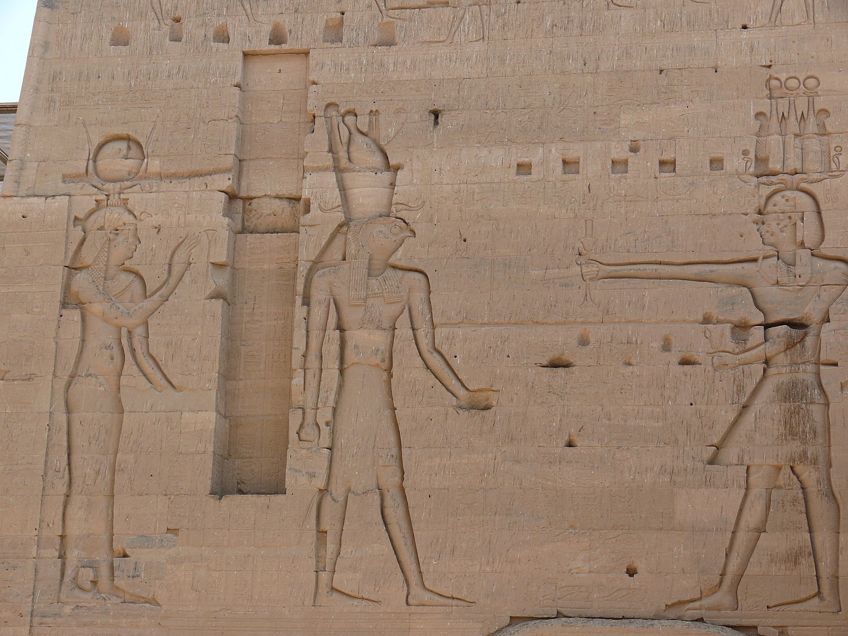
Madonna of the Clouds (c. 1425 – 1435) by Donatello
| Artist Name | Donato di Niccolò di Betto Bardi (1386 – 1466) |
| Date | c. 1425 – 1435 |
| Medium | Stone and marble |
| Dimensions (cm) | 33.1 x 32 |
| Where It Is Housed | Museum of Fine Arts Boston, Massachusetts, United States |
Another popular type of relief sculpture is the low-relief or bas-relief sculpture, which is best depicted in this sculpture by Donatello using a technique called rilievo schiacciato that he invented. Here, he created an illusion of volume by carving in a shallow manner into the surface of the marble with areas of subtle carving to add softness to the form of the Madonna.
The theme of the relief sculpture revolves around the future of Christ and his tragedy expressed in the body language of Mary.

Ludovisi Battle Sarcophagus (c. 250 – 260 CE) by an Unknown Sculptor
| Artist Name | Unknown |
| Date | c. 250 – 260 CE |
| Medium | Proconnesian marble |
| Dimensions (cm) | 153 (h) |
| Where It Is Housed | Palazzo Altemps, Rome, Italy |
The altorilievo relief sculpture is also known as the high relief sculpture and describes an artwork where its subject projects by more than half its form from the surface of its base. In most high-relief sculptures, the limbs of statues are completely detached from the base. This 1621 high-relief sculpture was created on a sarcophagus that was also identified as the Via Tiburtina Sarcophagus. The sculpture dates to between 250 and 260 CE and depicts a battle scene between Goths and Romans. The ancient Roman sculpture was titled after its first owner Ludovico Ludovisi, who was an Italian statesman and cardinal of the Roman Catholic Church.

Assembled Sculptures
While processes like carving make for sculptures that require subtractive methods, assembled sculptures rely on additive processes such as welding and gluing to form complete sculptures.
One can think of these sculptures as assemblages that can incorporate found objects, diverse materials, different textures, and mixed media.
Black Girl’s Window (1969) by Betye Saar
| Artist Name | Betye Irene Saar (1926 – Present) |
| Date | 1969 |
| Medium | Wooden window frame, paint, plastic figurine, printed and painted papers, lenticular print, and daguerreotype |
| Dimensions (cm) | 90.8 x 45.7 x 3.8 |
| Where It Is Housed | The Museum of Modern Art, New York City, United States |
A famous 20th-century example of assemblage sculpture is the mixed media sculpture by Betye Saar titled Black Girl’s Window, which integrates the artist’s multifaceted exploration of the mystical, private, and public through assemblage and the use of a weathered wooden window frame. The artwork also includes a variety of symbols and objects that speak to Saar’s identity, occult subjects, and politics of the time.
Carved Sculptures
Carved sculptures are a common type of sculpture that, like relief artworks, rely on a subtractive process to extract materials from a medium and “reveal” the sculpture. Carved sculptures use methods like chipping away or gauging out pieces of your medium to establish the shape and form of the artwork. One will also use tools like a chisel, hammer, palette knife, or scrapers to remove parts of the material you are working with.
Examples of carving include ice sculpture, gourd carving, stone carving, chip carving, and ivory carving among many other types.
David (c. 1501 – 1504) by Michelangelo
| Artist Name | Michelangelo di Lodovico Buonarroti Simoni (1475 – 1564) |
| Date | c. 1501 – 1504 |
| Medium | Carrara marble |
| Dimensions (cm) | 517 x 199 |
| Where It Is Housed | Accademia Gallery, Florence, Italy |
David is a remarkable example of a carved sculpture, which was revealed from the Carrara marble by master Italian sculptor Michelangelo between 1501 and 1504. The sculpture is symbolic of the 16th-century independence of the city of Florence and an ode to themes of heroism, beauty, youth, and the spirit of the Renaissance. Values of self-confidence are embedded in the massive statue which was expertly carved from a single piece of marble.
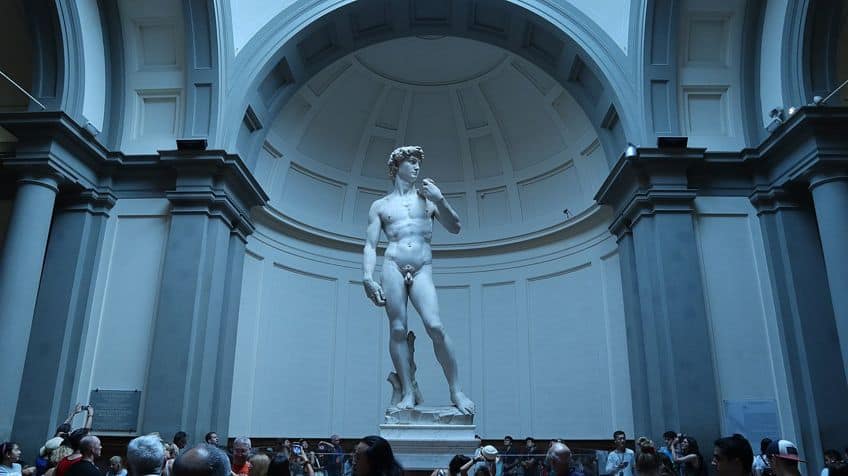
Cast Sculpture
Sculptures that are created using a casting process are known as cast sculptures and can be produced by pouring a liquid material into a preset mold. Whether you are using bronze and wax or silicone and plaster, cast sculptures are among the most famous types of sculptures following carved sculptures.
The beauty of cast sculpture lies in the ability to replicate and perfect a sculpture.
Eternal Springtime (c. 1898 – 1918) by Auguste Rodin and Ferdinand Barbedienne
| Artist Name | Auguste Rodin (1840 – 1917) and Ferdinand Barbedienne (1810 – 1892) |
| Date | c. 1898 – 1918 |
| Medium | Bronze |
| Dimensions (cm) | 66 x 80 x 39.4 |
| Where It Is Housed | Rodin Museum, Paris, France |
Modeled by Auguste Rodin and casted in bronze by Ferdinand Barbedienne, Eternal Springtime is a famous early 20th century example of casted sculpture that incorporates figures from the artist’s early works. Here, Rodin portrays the mythological character Cupid and a sensuous female figure in a passionate embrace. Rodin used traditional sculpture materials for his time, including wax, clay, bronze, and marble, and learned most of his techniques from his experience working in the studios of his contemporaries. Rodin’s success enabled him to eventually employ the assistance of other artists to execute his artistic vision and produce multiple versions of his work. The majority of his work was cast under the management of the Rodin Museum for works produced between 1924 and 1926 and are all considered original Rodin works.

Modeling Sculpture
These types of artistic sculptures involve processes of modeling and malleable materials such as clay and wax to define the form of the artwork. Sculptures and vessels produced using clay are usually fired to harden and establish the solid form of the final artwork.
Modeling sculptures are typically smaller than carved forms, depending on the type of clay used.
Small Cattle Figurine (c. 1030 – 1220 CE) by Unknown Sculptor
| Artist Name | Unknown |
| Date | c. 1030 – 1220 CE |
| Medium | Clay |
| Dimensions (cm) | 5.36 x 2.67 |
| Where It Is Housed | Mapungubwe National Heritage Collection, University of Pretoria, Johannesburg, South Africa |
This tiny clay cattle figurine is one of many small, modeled sculptures that are part of the Mapungubwe Collection that was presented by the University of Pretoria in South Africa. These figurines were created using low-fired clay and, although the sculpture’s horns are broken off, the figurine captures the immediate environment of prehistoric communities. Most clay sculptures from the era between 1030 and 1290 hold a cultural significance to the social and symbolic ideas of indigenous people from the past and were excavated in the 1930s. As evidence of human artistic construction, these miniature animal figurines represent the stylistic narratives of the Mapungubwe heritage.
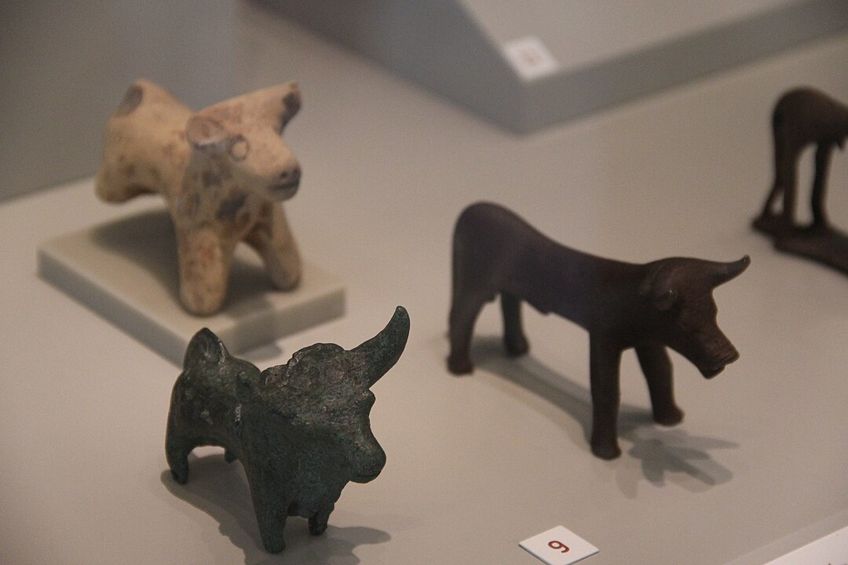
Kinetic Sculpture
Sculptures that incorporate movement into the realization or perception of their three-dimensional form are known as kinetic sculptures. These are perhaps the most fascinating types of sculptures since movement in a sculpture’s form and structure adds to the visual interest and concept of the work uniquely. Kinetic sculpture is also a sub-category of kinetic art.
Such artworks that involve motion have long been associated with art movements like Constructivism and Bauhaus, as well as creatives like Marcel Duchamp.
Light Prop for an Electric Stage (Light-Space Modulator) (1930) by László Moholy-Nagy
| Artist Name | László Moholy-Nagy (1895 – 1946) |
| Date | 1930 |
| Medium | Aluminum, nickel-plated brass, steel, wood, various metals, plastic, and an electric motor |
| Dimensions (cm) | 151.1 x 69.9 x 69.9 |
| Where It Is Housed | The Harvard Art Museums, Cambridge, United States |
Light Prop for an Electric Stage also known as Lichtrequisit einer elektrischen Bühne is one of the most famous examples of a kinetic sculpture constructed by the famous Hungarian artist László Moholy-Nagy in 1930. The kinetic sculpture is powered by an electric motor and reflects the artist’s experimentation with light, new materials, and technology in the Bauhaus Modern era. The sculpture inspired a film by the artist titled Lightplay: Black, White, Gray (1930), as well as many printed artworks and images of the sculpture. Today, the kinetic sculpture remains operational under the care of the Harvard Art Museums.
These seven different types of sculpture show us the development of the mediums and just how diverse they can be. Creating a sculpture can be achieved in a variety of ways, and whether you are casting, assembling, or simply modeling, the process of sculpture is also known to have therapeutic benefits. In exploring other types of sculptural processes and techniques, we hope that you will be inspired to try your hand at this expansive medium!
Frequently Asked Questions
What Are the Main Types of Sculpture?
There are several main types of sculpture. These include freestanding sculpture, modeling sculpture, relief sculpture, casting sculpture, assembled sculpture, carved sculpture, and kinetic sculpture.
What Are the Traditional Materials Used in Sculpture?
Today, one can use a vast range of materials to create sculptures. The traditional materials used in sculpture include materials like marble, bronze, various metals, wood, clay, plaster, natural materials, glass, and other solid found materials.
What Are the Elements of Sculpture Art?
In art, some elements and principles govern the design and creation of artworks. The main elements of sculpture art include line, volume, color, rhythm, emphasis, continuity, shape, balance, space, texture, value, and proportion. These are used alongside the principles of sculpture design to produce cohesive artworks.
Jordan Anthony is a Cape Town-based film photographer, curator, and arts writer. She holds a Bachelor of Art in Fine Arts from the University of the Witwatersrand, Johannesburg, where she explored themes like healing, identity, dreams, and intuitive creation in her Contemporary art practice. Jordan has collaborated with various local art institutions, including the KZNSA Gallery in Durban, the Turbine Art Fair, and the Wits Art Museum. Her photography focuses on abstract color manipulations, portraiture, candid shots, and urban landscapes. She’s intrigued by philosophy, memory, and esotericism, drawing inspiration from Surrealism, Fluxus, and ancient civilizations, as well as childhood influences and found objects. Jordan is working for artfilemagazine since 2022 and writes blog posts about art history and photography.
Learn more about Jordan Anthony and about us.
Cite this Article
Jordan, Anthony, “Types of Sculpture – An In-Depth Look at This Fascinating Medium.” artfilemagazine – Your Online Art Source. January 15, 2024. URL: https://artfilemagazine.com/types-of-sculpture/
Anthony, J. (2024, 15 January). Types of Sculpture – An In-Depth Look at This Fascinating Medium. artfilemagazine – Your Online Art Source. https://artfilemagazine.com/types-of-sculpture/
Anthony, Jordan. “Types of Sculpture – An In-Depth Look at This Fascinating Medium.” artfilemagazine – Your Online Art Source, January 15, 2024. https://artfilemagazine.com/types-of-sculpture/.



